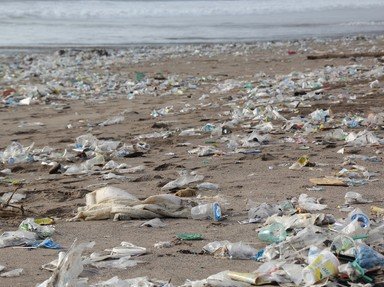Quiz Answer Key and Fun Facts
1. Plastics were invented as an alternative to which natural substance, banned from trade in most of the world since the late 20th century?
2. Though all oceans in the world have a floating garbage patch made up of plastics, which ocean has the largest one (by area and by volume)?
3. The vast majority of plastics going into the ocean comes from countries or territories in what part of the world?
4. Microplastics are only found in the ocean and in the bodies of ocean-bound organisms.
5. Which organization put together a conference in 2017 where representatives from all over the world discussed the protection and conservation of the oceans and their resources?
6. Microplastics are not only generated from plastic waste breaking down, some are generated specifically for use. Which industry, one of the main producers of manufactured microplastics, has been long using microplastics in its products?
7. The large majority of the plastic in the ocean gets there by what mechanism?
8. There exist plastic eating organisms that break down the plastic into safe components and will be able to clean up the oceans in a matter of a few years.
9. One of the major contributors to plastic pollution, especially in the oceans, is the lack of adequate plastic recycling.
10. Finally, let's talk about the titular plastic straws... will a ban on plastic straws make a dent in the plastic pollution worldwide, especially in the oceans?
Source: Author
LeoDaVinci
This quiz was reviewed by FunTrivia editor
rossian before going online.
Any errors found in FunTrivia content are routinely corrected through our feedback system.
